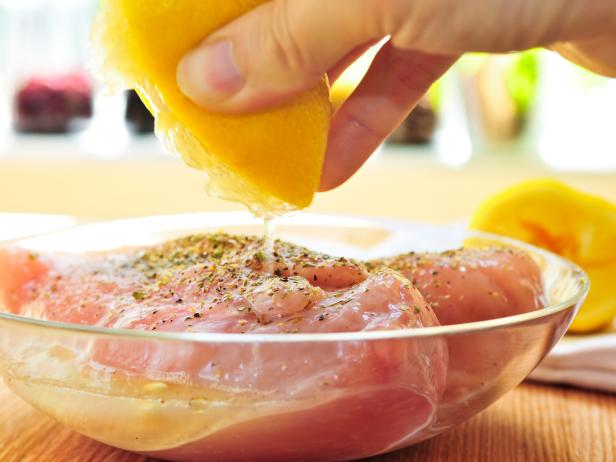What’s Lean and What’s Mean: Incorporating Meat Into a Healthy Diet


If you’re a meat lover and concerned you’re not following the path to healthy living, don’t fret. You can incorporate meat into your diet as long as you learn the rules.
“There’s lots of nutritional value to eating meat,” says New York University clinical associate professor of nutrition and food studies Lisa Sasson. That statement alone does not give you a free pass to steak town.
Beef, like those juicy rib eyes and tender T-bones, contains high levels of saturated fat. If you really can’t resist the hot-off-the-grill steaks, Sasson says to eat fattier cuts in smaller portions, and serve red meat less frequently. There are better alternatives, however, that are equally satisfying and healthier.
“Probably the healthiest is meat that’s been grass-fed,” says Sasson. If you have a butcher or supermarket that offers nutritious grass-fed beef, you’re going to notice it’s more hard-hitting on the wallet. The good news is there are still options for those of us on a budget.
“That’s a little twist,” says Sasson. The better-for-you cuts are actually cheaper. Yes, you read that correctly. Healthy, lean cuts of meat cost less than prime grade. How can you tell what’s what? The difference is visible to the naked eye. “The marbling is the white fat that you see when you look at prime meat,” explains Sasson.

When shopping for lean cuts, the first thing to do is look at the sticker on the packaging. Again, “Prime” is the highest grade, but it does not equate lean. Instead look for “Choice” or “Select.” They will have less marbling and more red meat. Or if the package isn’t marked in an obvious way, look for the type of cut. Sasson explains if the words “loin,” “round” or “chuck” are on the label, you’re in good shape. “Things like ‘eye round’ or ‘round roast’ are what to look for.” If you do wind up leaving the grocery store with a fattier cut of meat, the best thing you can do is trim the fat. Sasson recommends freezing or refrigerating the meat first so it’s easier to cut around the good part and get rid of that unwanted fat.
Note to the cook: Don’t expect to apply the same techniques you would with a premium cut and wind up with the same results. Lean meat is tougher and thus needs to be handled with care to achieve a moist and superb result. “You just have to cook them right and then they become tender and moist,” says Sasson. “Marinating in something acidic is a great way to do that, or use the meat in stews and cook slowly — then they get really juicy.”

Berkant Sezer, Berkant Sezer
If you’re in the mood for meatballs, meatloaf or hamburgers, seek out the leaner ratio of fat to meat. Ground meat with a ratio of 90 percent meat to 10 percent fat is the target. “It won’t be as juicy as the 80 percent when you’re making a hamburger, but there are other things you can do to make it tastier,” says Sasson. She suggests blending the ground meat with herbs or salsa before cooking. Of course, with whatever cut or preparation, avoid any fat that’s left in the pan. “Don’t use the fat juices,” Sasson warns. “They may be delicious and make a nice gravy, but you are going to add a lot of fat.”
Rules apply to the birds as well. “When it comes to poultry, white meat is the best — and no skin,” Sasson says. That doesn’t mean you have to rule out dark all the time; the same rule follows as does with the fattier cuts of red meat. Eat dark meat in smaller quantities and less frequently. She reiterates it is the skin that you really should avoid.

iStock/Elenathewise, Elenathewise
Eating meat is, of course, an individual choice based on not only taste preference, but beliefs both religious and ethical. Sasson is not advocating meat consumption for everyone, but if you are a person who chooses to eat meat, there really are health benefits. “It’s a great way to get iron in your diet because it is highly absorbable,” explains Sasson. “Meat definitely has nutritional value and it’s very satisfying. Once in awhile, there’s nothing wrong with eating meat,” she adds.
Related Links:
8 Recipes Every Real Live Grownup Should Master
8 Healthy Fats You Should Be Eating
Kiri Tannenbaum is a graduate of Le Cordon Bleu Paris and holds an M.A. in food studies from New York University where she is currently an adjunct professor. When her schedule allows, she leads culinary walking tours in New York City and is currently at work on her first book.
























